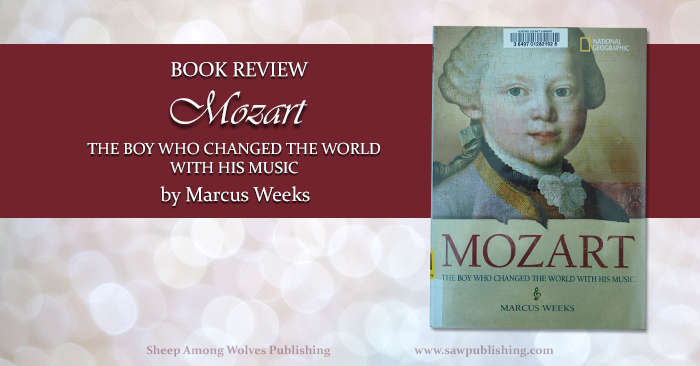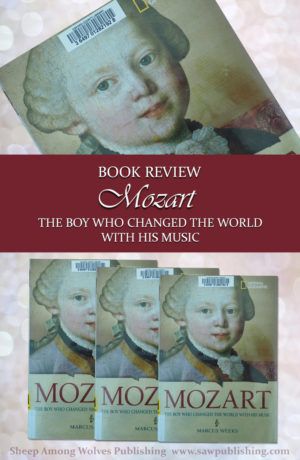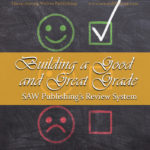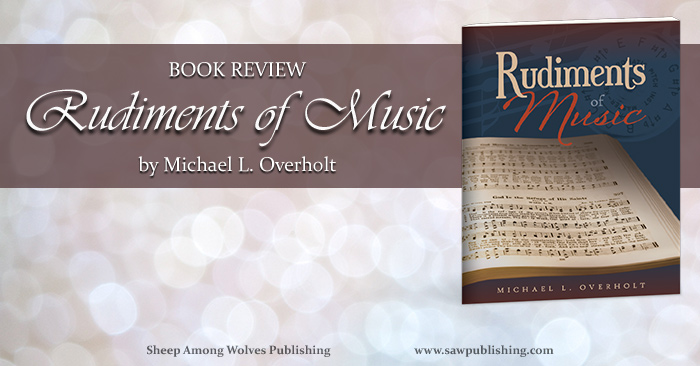Mozart: The Boy Who Changed the World with His Music—Book Review
 I love obscure books. I love reading obscure books. I love reviewing obscure books. The only thing I don’t love about obscure books is trying to source them, after somebody else recommends them!
I love obscure books. I love reading obscure books. I love reviewing obscure books. The only thing I don’t love about obscure books is trying to source them, after somebody else recommends them!
Which is why I am making a conscious effort right now to find and review some books you have a good chance of finding on your regular public library shelves—books that can slip into your history or social studies courses, books you can check out for your hungry middle-graders; books that are just fun for a rainy afternoon.
And the next in our series of found-it-at-the-library reviews is the book I’m introducing today—Mozart: The Boy Who Changed the World with His Music. I pulled it off the shelf because the cover just called to me. (That has got to be one of the cutest child portraits ever painted!) And I am reviewing it so you can have an educated opinion when the cover just calls to you, too!
Book Details
- Title: Mozart: The Boy Who Changed the World with His Music
- Author: Marcus Weeks
- Publisher: National Geographic
- Genre: Juvenile Biography
- Number of Pages: 64
- Theme: Life of Mozart
- Age Range: 8-12
- Source: Amazon
 Summary
Summary
Wolfgang Amadeus Mozart has gone down to history as perhaps the greatest composer the world has every seen. What did his life actually look like? Beginning with the story of Mozart’s remarkable childhood, and carrying the reader through the personal, political, and social events of his day, this National Geographic World History Biography submerges young readers in the life and times of a child prodigy who changed the world with his music.
A stunning mixture of classic paintings, artifact photos, and modern illustrations bring the 18th century to life, while numerous special boxes define technical terms, highlight historical events, and showcase period objects and inventions. Teachers will especially appreciate the detailed timeline running along the bottom of each full-colour, gloss page, that places the incidents of Mozart’s life alongside significant events on the world stage.
SAW Rating System
Great Qualities—35/50
Knowledgeability—7/10
Coverage of Topic—8/10
Quality of Writing—7/10
Impact of the book—6/10
Originality—7/10
Good Qualities—20/50
Innocence regarding evil—4/10
Active promotion of good—4/10
Level of spiritual challenge—3/10
Healthy view of life—5/10
Honouring God—4/10
Note: our original format was geared towards books that were primarily text. For that reason I’m always torn grading material where the illustrations play a significant role. In the present case I have bumped the Quality of Writing score (which would probably have come out around a 5 for the text alone) up to a 7. I felt the text style was oversimplified, but I really loved the quality feel of the illustrations, vintage paintings, and photographs.
Red Flags
-
Romance and morality
Mozart falls in love with singer Aloysia Weber, and it is commented that “this was his first serious love.” This incident is referred to later as his “failed affair with Aloysia.”
-
Disturbing content
Mention is made of the fact that five of Mozart’s siblings died before he was born. Only two of Mozart’s own six children survive infancy.
An illustration showing the attack of the Bastille portrays two soldiers lying wounded on the ground.
Mozart’s own death at age 35 is covered. Theories that he perished from poisoning/a curse are discussed, but not treated as factual.
-
Language
The word “cesspit” is used. Also “simpleton” in the title of an opera.
-
Alcohol and drug use (includes tobacco)
Drinking and playing billiards and skittles in taverns are mentioned in a positive connotation, but do not play a major role in the book.
-
Spiritual content
While not written from a strongly religious position, Mozart’s Roman Catholic faith, and his composition of church music, are portrayed throughout the text.
The Enlightenment appears as a positive movement, and some of the facts surrounding it have been oversimplified to an extent that corrupts their accuracy.
Mozart’s connection with Freemasonry is covered.
The desire for fame and fortune is represented as natural/commendable.
-
Family roles and behavior
Mozart’s friction with his father, and eventual assertion of independence, play a role in the narrative. Mozart marries against his father’s wishes.
-
Mature subject matter
A number of period portraits are included in which ladies are depicted with low necks. In the smaller details of some illustrations classical figures appear unclothed. For the most part I feel that the selection has been comparatively discreet, but parents may want to exercise discretion based on personal preferences/their own child’s needs.
The title of one of Mozart’s operas, “The Abduction from the Harem,” is mentioned, but no further details are given.
Mozart is stated as having a rude sense of humour. No examples are given.
Reading Mozart: The Boy Who Changed the World with His Music
As some of you may know, I’m a writer who likes to review books I can 100% stand behind. It’s a step out of my comfort zone to review a basically-secular resource, with some serious pros and some potentially-serious cons—and then just leave it up to the world to make their own choice.
However, that’s exactly what I’m doing with my found-it-at-the-library review series. Mozart: The Boy Who Changed the World with His Music isn’t a perfect book. At the same time, it’s a book with lots of potential. I loved the deliciously-quality feel, and I got a solid picture of the outline of Mozart’s life. I also gained a general idea of the difference between a symphony and a concerto—which was probably an ample reward, all by itself!
Interested in more music-related SAW reviews? See our previous post:

After fifteen months, and 30+ reviews, here’s our look at the pros and cons of SAW Publishing’s review system.

A tiny church struggling to keep its doors open, a pair of girls only wanting to belong, two determined enthusiasts on a mission to change the world, and a young cynic who doesn’t believe it can be changed—how will Mr. Meadows’s Desperate Experiment affect their hopes and dreams?

Have you ever wished you could ask some questions of a real math expert? Maria Miller of Math Mammoth gives us that opportunity today.

